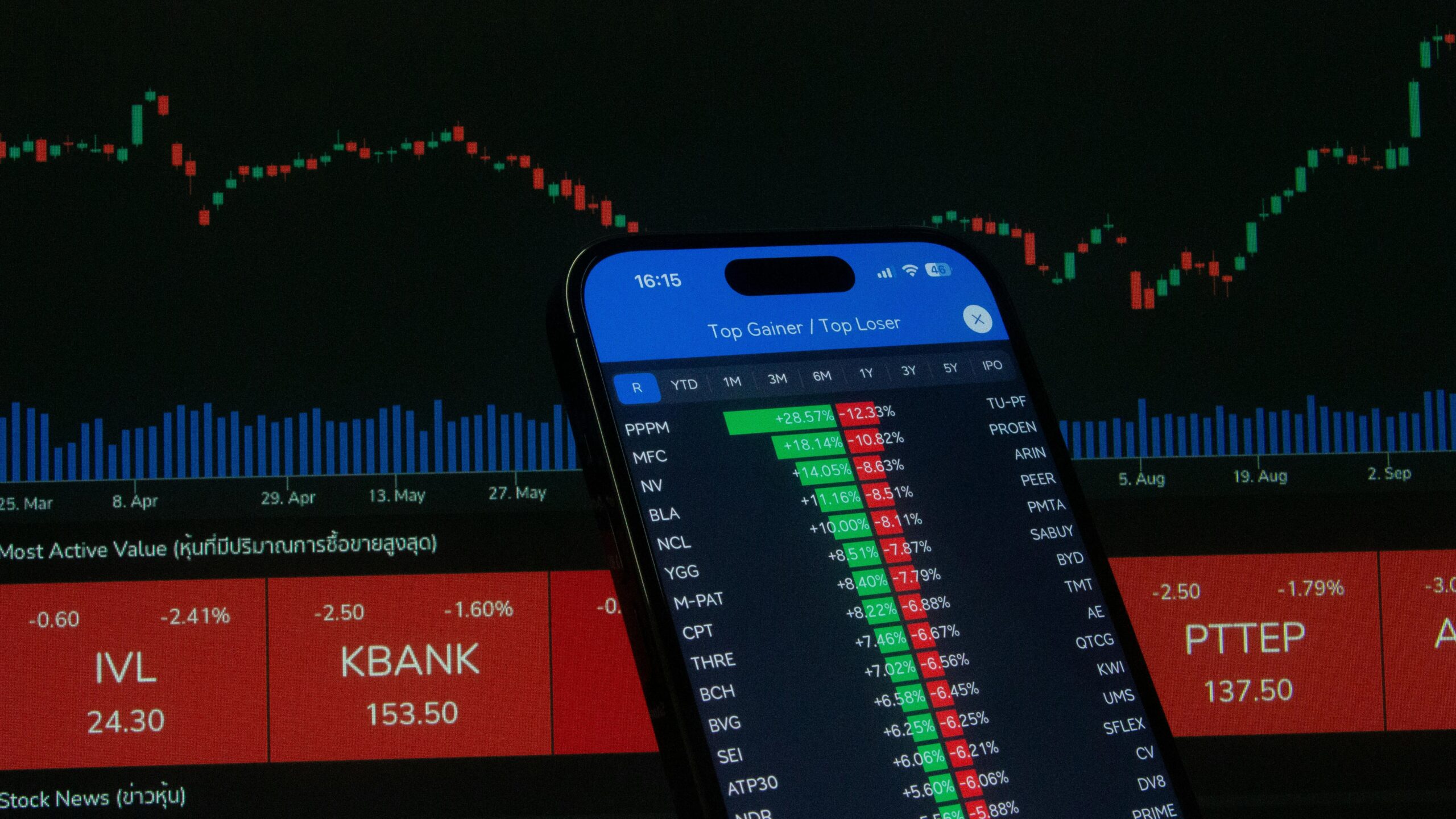Are you still wondering which trading strategy to implement? Let me give you a hand. Today, I’ll talk more about swing trading.
So, if you want to find out how to prepare for such a career, what tools you can use, and what are the most popular strategies for beginners, keep reading.
What is Swing Trading and How Does It Work?

First, it’s important to understand what swing trading is and what sets it apart from other known trading types in the market.
Simple Definition of Swing Trading

Swing trading is the form of trading where you buy and sell financial assets faster than a long-term investor but slower than someone who practices day trading. Typically, swing traders keep their positions open for several days, trying to profit as much as possible from market price fluctuations—known as swings.
Basically, a swing trader’s job is to figure out whether the value of an asset will rise or fall before making a move in the market. Their profitability depends on how often they can correctly predict market movements.
Swing trading is different from other medium-term strategies that profit from significant market movements. Unlike strategies that require investors to hold a certain asset for several years, swing traders look for short moments to profit from an asset’s price fluctuations, exposing themselves to minimal risks and enjoying an optimal profit potential.
Difference from Day Trading and Long-Term Investing

Above, I mentioned that swing trading is the middle path between day trading and long-term investing. What distinguishes swing trading from day trading is the duration of transactions.
As the name suggests, day trading involves opening and closing transactions within a single day, aiming to avoid large market fluctuations and stay away from losses.
The goal of a day trader, as you might already guess, is to profit from small, rapid market movements without maintaining open positions overnight and taking too many risks.
On my blog, there’s an entire article just about day trading. If you want to brush up on this topic, I recommend reading it. You can find it here.
On the other hand, swing trading means keeping transactions open over several days to profit from small to medium price movements.
Because of the differences in transaction durations, swing traders make fewer trades than day traders, but they enjoy a larger profit from each transaction.
Mental Preparation for Swing Trading

Now that you know what swing trading is and how it works, let’s see how you can mentally prepare for a career as a swing trader.
Setting Realistic Expectations

Start with realistic expectations. No one is rushing you, so don’t chase quick gains and don’t take risks you’re not sure you can manage. Instead, take things step by step and enjoy slow but sure growth. After all, your goal is to build a stable income source with minimal risks.
Developing Trading Discipline

We’ve said it before and I’ll repeat it whenever necessary: discipline is the cornerstone of success, so never underestimate its importance. In this regard, you can take a lot of small steps that make a difference.
Start by establishing clear rules, which you then follow religiously. No exceptions, no deviations, no “little experiments.” Then, create a routine and stick to it. Consistency and discipline go hand in hand.
And finally, incorporate discipline into your daily life. Let’s be honest—it will be hard to become a disciplined trader if you completely ignore the concept in any other aspect of your life.
Managing Emotions in Trading

Want to know my honest opinion? Emotions have no place in trading, so avoid any move that could awaken fear, anxiety, fright, or greed in you. I know, I know, the pressure that comes with trading is often overwhelming. Besides the high level of stress you risk facing, emotions can prevent you from making rational decisions and ultimately, losing money.
But remember: you’re going to work with numbers, so adopt a logical and rational approach. If you want to do this long-term, it’s essential to learn how to keep your emotions under control. A well-thought-out strategy that you strictly follow can help you stay away from impulsive decisions and enter only into transactions with minimal risk.
Essential Tools for Getting Started

Before you start your career as a swing trader, make sure you take things step by step and do everything necessary to succeed in the long term. Here are 3 things to pay attention to:
Choosing the Right Platform

As you may already know, trading platforms are types of software applications that you can use to buy or sell financial assets. If you want to practice swing trading, then you will need an efficient trading platform that provides access to real-time market data, charts, technical analysis, and transaction management features. Some of the most popular platforms include MetaTrader 4 or 5, TradingView, and NinjaTrader.
We’ve written an entire article about trading platforms, so go here and read it. It will be helpful.
Basic Technical Indicators

We’ve already established that a swing trader looks to profit from market price fluctuations, keeping transactions open for several days or even weeks. When analyzing the market, they pay attention to the following basic technical indicators:
- RSI (Relative Strength Index), which measures overbuying or overselling of an asset or identifies possible price reversals.
- MACD (Moving Average Convergence Divergence), which uses the convergence and divergence of two moving averages to signal changes in the direction of a trend.
- Moving Averages, which help identify short-term or long-term trends.
Recommended Educational Resources

Finally, continue to invest in your education. Follow successful traders and discover how they trade. Look for courses, webinars, or masterclasses on this topic and sign up for them. And, don’t forget to take advantage of all the opportunities that come your way and learn everything that can be useful.
Start with “Advanced Swing Trading – Strategies to Predict, Identify and Trade Future Market Swings” by John Crane. It’s a must-read when it comes to swing trading. It contains lots of examples that will help you better understand swing trading and make the best decisions during transactions.
First Steps in Swing Trading

When you’re just starting out, the first steps are the most important and can play a crucial role in your long-term results. So, if you’ve decided that swing trading is for you and you’re ready to place your first trade, here are 3 things you can take care of initially.
Market Analysis and Asset Selection

The first step would be to analyze the market you want to trade in. For analyzing the market and determining possible price fluctuations of different assets, swing trading uses fundamental or technical analysis:
- Fundamental analysis focuses on economic, financial, or other qualitative and quantitative factors that might influence the value of assets.
- Technical analysis looks at price and volume data over specific time intervals to identify trends and predict future price movements.
Next, it is necessary to choose the assets you wish to trade. An important thing to know is that swing trading works best when there is sufficient volatility and liquidity. Volatility offers opportunities, while liquidity is necessary for traders to open or close positions at the most optimal times.
One of the markets that meet these requirements and is suitable for swing trading is the stock market.
Setting Stop Loss and Take Profit

Next, to protect your investments, it is essential to set stop-loss or take profit orders for each transaction. These automatically limit losses by closing the position when the price reaches a predetermined level.
A stop-loss helps minimize losses when the price of an asset moves in the opposite direction of your position. For example, you can set a stop loss at 2% below the entry price to protect your account in case the market moves unfavorably.
Take profit is activated when the price of an asset reaches a certain predetermined profit level. For example, you can set a take profit at 5% above the entry price to automatically close the position when you have achieved the desired profit.
Proper Position Sizing

Although often overlooked, position sizing plays a crucial role in shaping a risk management strategy. Essentially, this step helps you determine what percentage of a particular asset — whether it’s stocks, commodities, or crypto—you should buy or sell per transaction.
This is determined based on the entry price, stop-loss level, the capital you have available, or are willing to risk.
Proper position sizing helps you maximize your profits and keep risks to a minimum, being a step you should not skip if you want to be profitable in the long term.
Basic Strategies for Beginners

Now it’s time to look at some of the most popular swing trading strategies. These methods are easy to understand and implement, making them perfect for traders just starting out.
Trading with the Trend

This trading method involves following the existing and prevalent trends in the market. Once you have identified upward or downward trends, you can align with the market’s direction and trade accordingly until signals suggest it’s time to adopt new positions.
Because trends focus on the market’s big picture, swing trading can be an ideal tool to use when you want to consider trends.
Think of it this way: if the trend is the main current, swing trading allows you to profit from the smaller movements within this current.
Using Support and Resistance

This is one of the fundamental strategies in swing trading. Support levels are price limits where an asset stops falling and starts to rise, while resistance levels are where the price stops rising and starts to fall.
These levels can help you when you need to make buying or selling decisions. A good buying signal would be when a price approaches a support level. On the other hand, when the price approaches a resistance level, you might consider selling the asset.
Confirming Trading Signals

If you want to be more confident in your trading decisions, I recommend not relying on a single indicator or signal to enter the market. Instead, confirm signals with multiple analysis tools to reduce risks.
You can use indicators such as RSI, MACD, or moving averages to ensure that the entry or exit points you have chosen are optimal.
Or you can look at price patterns like “double top” or “head and shoulders,” which can provide clear signals when the market is about to reverse.
Risk Management for Beginners

To enjoy a successful career as a swing trader, you need a well-thought-out risk management strategy. Your goal is to minimize risks and consistently generate profits.
There are several ways you can manage risks. Let’s look at two of the most popular techniques.
The 1% Rule per Trade

It’s no news that losses in trading are inevitable. However, what you can do to minimize them is to have good risk management.
The 1% rule means not risking more than 1% of your account capital on a single trade. A maximum risk of 1% per trade is standard for most professional traders.
Let’s be clear: it doesn’t mean you trade only 1% of your capital. You can trade with as much capital as you want, but if the trade loses more than 1% of your capital, it automatically closes.
So, as long as you respect such a rule, you can control losses, keep them at a minimal level, and still enjoy high returns.
Portfolio Diversification

Another way to limit losses is through portfolio diversification. If you’re not new to this field, you’ve undoubtedly heard of this concept at least in passing.
Many experts recommend not putting all your eggs in one basket but instead making multiple investments across various stocks or markets. This ensures that if something happens to one of your investments, you will continue to generate profits from the rest of your investments and can offset the losses.
Now that you’ve seen what swing trading involves, what do you think: does this trading style suit you or not?
About Trading Busters
Trading Busters is where you learn to trade smart, without false promises and cheap tricks. We are a community of passionate traders, dedicated to financial education and effective trading strategies. We offer clear information, practical advice, and detailed analyses to help you make better decisions in the market. Whether you are just starting or already have experience, at Trading Busters, you find everything you need to improve your skills and navigate the financial markets with confidence.


